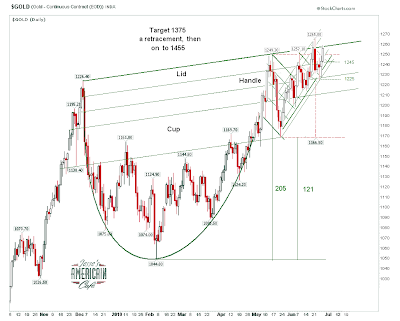Apparently I am not alone in concluding that significant financial reform, including the restructuring of the financial sector to serve, rather than to tax and depress, the real economy is a vital necessity and an integral part of the recovery process.
This is not to say that the BIS General Manager and I would agree on all the details of the program. But it does speak to the notion that the size and structure of the financial sector was a contributing cause of the financial collapse, rather than an innocent bystander to some improbable accident or act of God.
So if one believes this, that the financial sector had become an integral part of the problem, it becomes rather obvious to conclude that policies based on simplistic slogans like 'less debt' or 'more spending' alone are not going to be effective in changing a systemic distortion that was over twenty years in the making, involving an orgy of moral hazard, financial fraud, and regulatory capture that became the cornerstone of the developed nations' economies.
Indeed from my vantage point, it appears that the various policy proposals being discussed are indicative of special interest groups arguing over a dying man as they consider how best to strip the corpse.
My own concern is that the various parties, being in a feeding frenzy of self-interest, will ignore the warning signs of public dissatisfaction and fading confidence, until it is too late to pursue conventional methods of reforming the system.
"Let me conclude. The lingering structural deficiencies in the financial sector and the longer-term drawbacks of very expansionary macroeconomic policies continue to put enormous demands on our ability to steer the best course through hazardous terrain.You may read the General Manager's entire speech here.
When markets and the public start to lose confidence, it is an illusion to suppose that delaying the adoption of the policies we know are needed would smooth the adjustment process. We cannot wait for the resumption of strong growth to begin the process of policy correction. In particular, delaying fiscal policy adjustment would only risk renewed financial volatility, market disruptions and funding stress. A much better strategy is to set out credible front-loaded actions for meaningful fiscal adjustment and for restructuring the financial system.
International cooperation is particularly important at the current difficult juncture, when confidence is fragile. In particular, finalising international agreements on regulatory reform on schedule will send the right signal - not only to financial markets but also to the public at large. The time has come to agree on major practical reforms to substantially increase the resilience of the financial industry. These reforms, combined with policies of fiscal adjustment and efforts to restructure the financial industry, will go a long way to putting the financial crisis behind us. We must seize this opportunity."
Jaime Caruana, General Manager of the BIS, on the occasion of the Bank's Annual General Meeting, Basel, 28 June 2010.



































